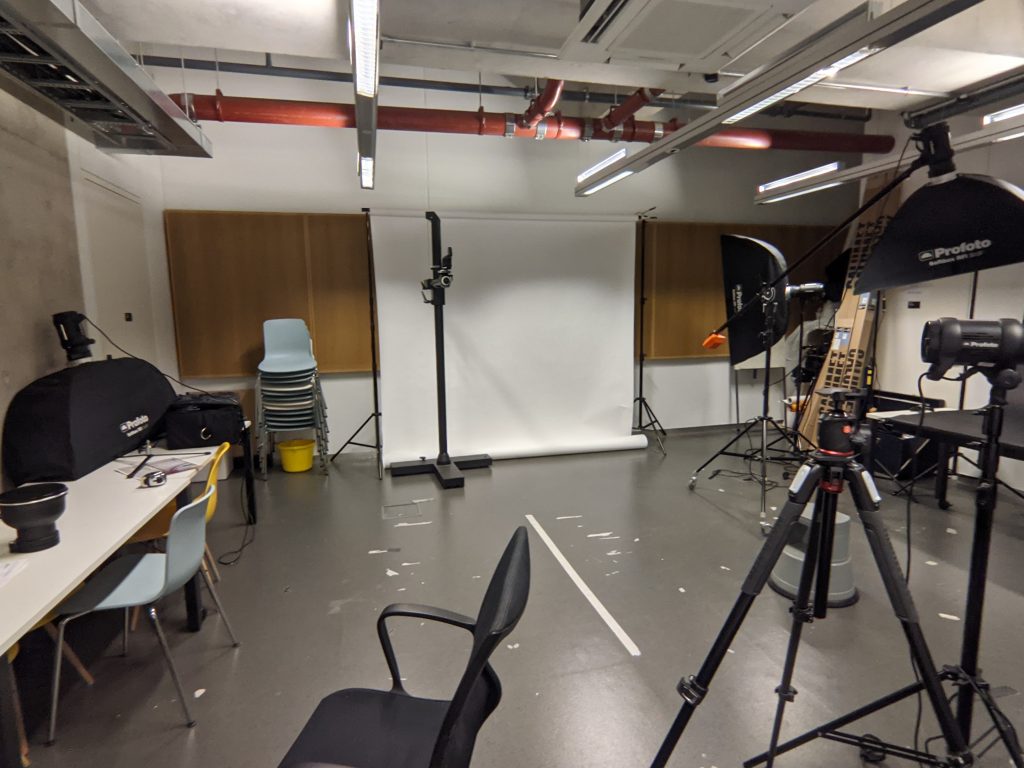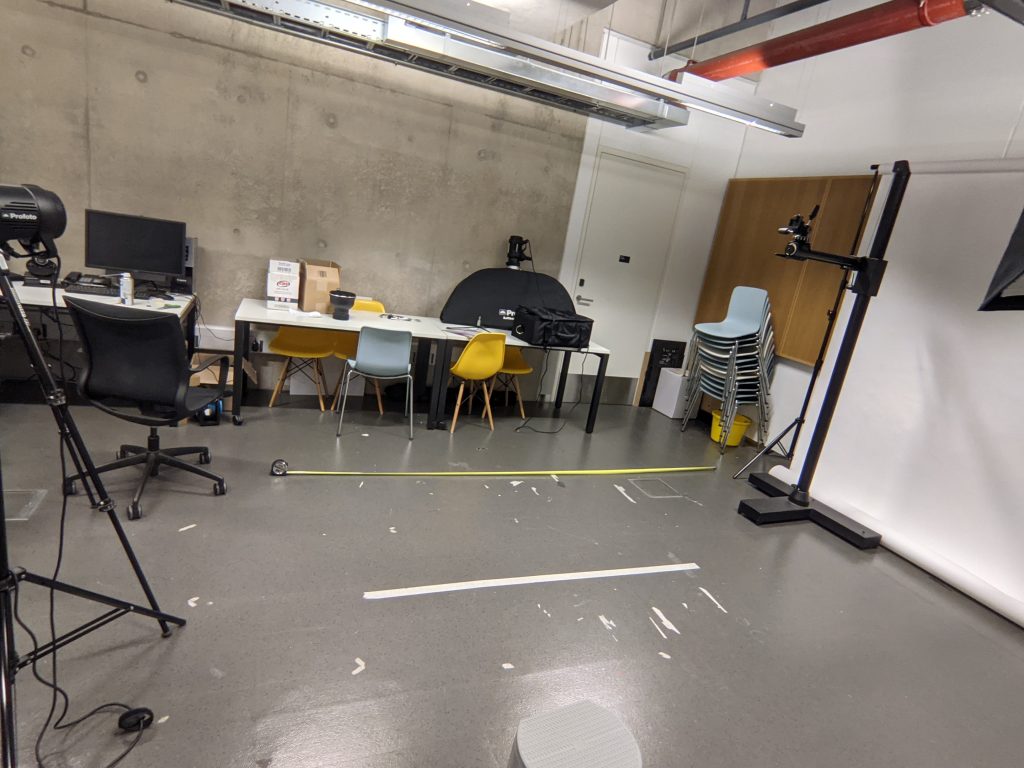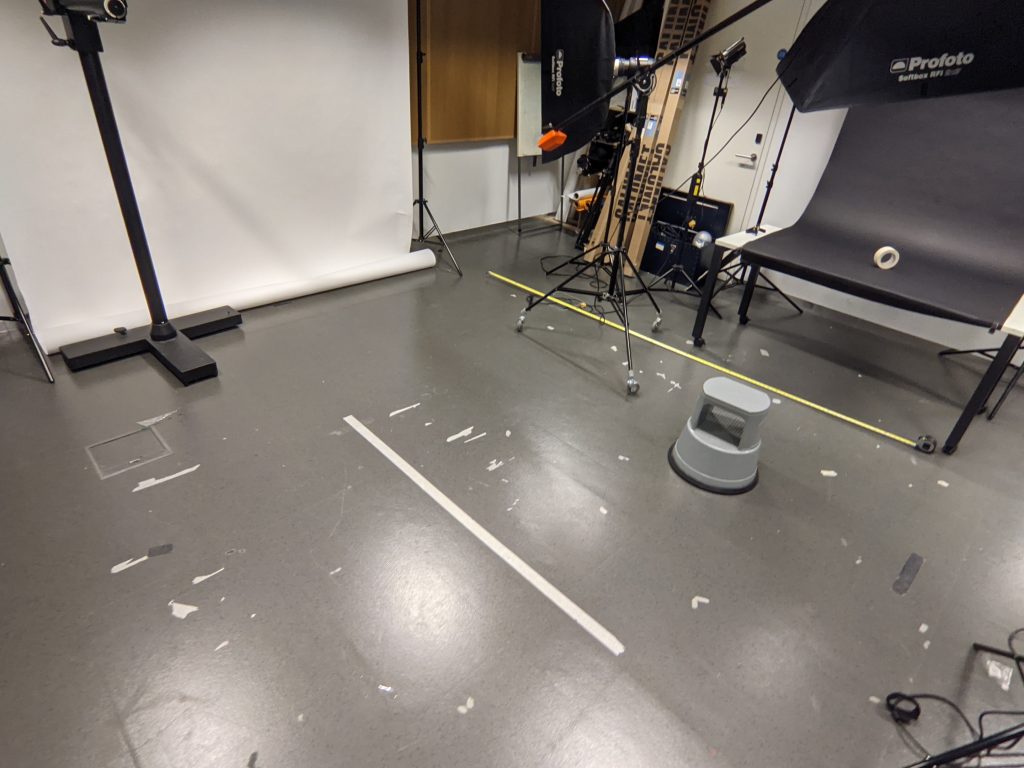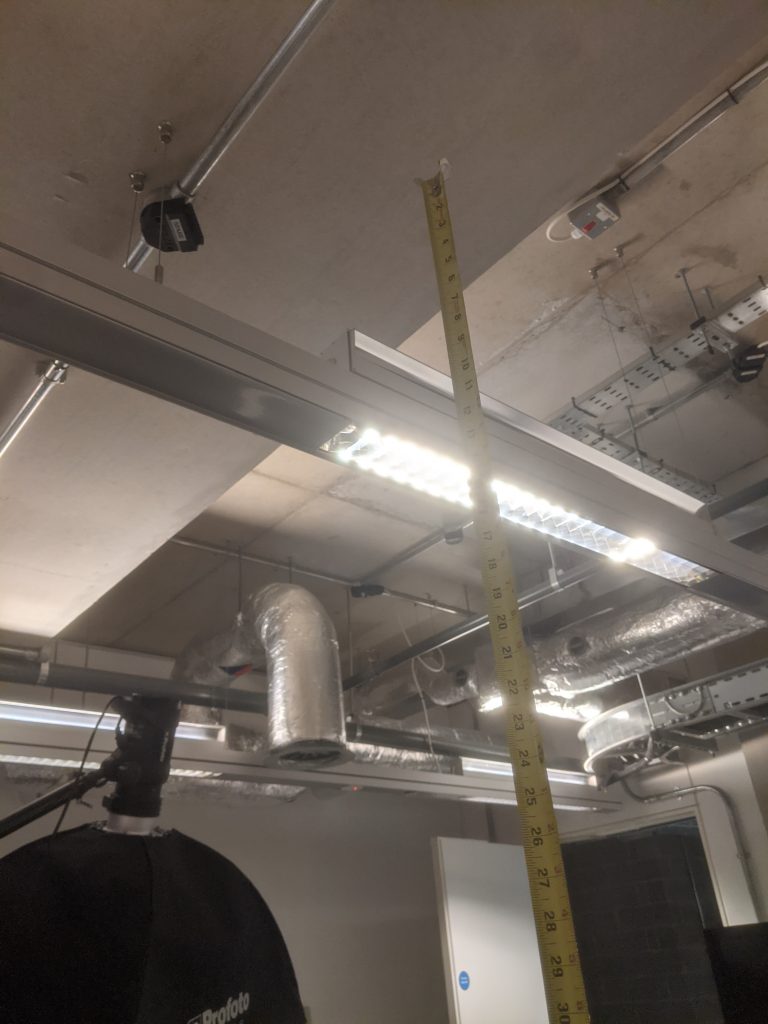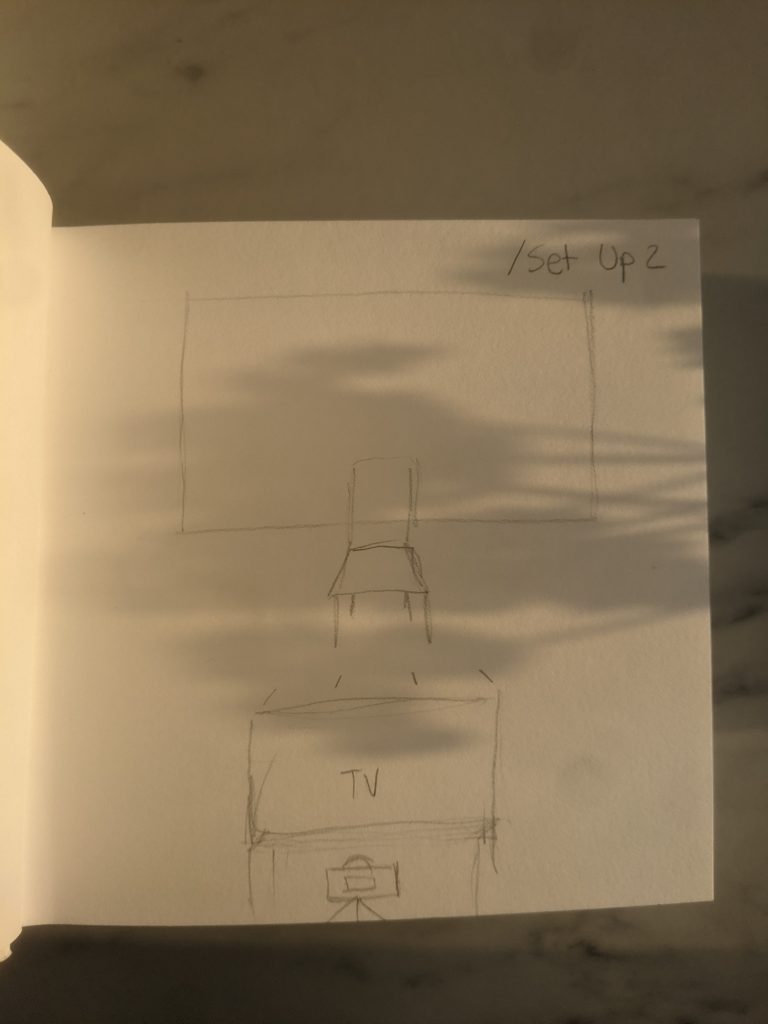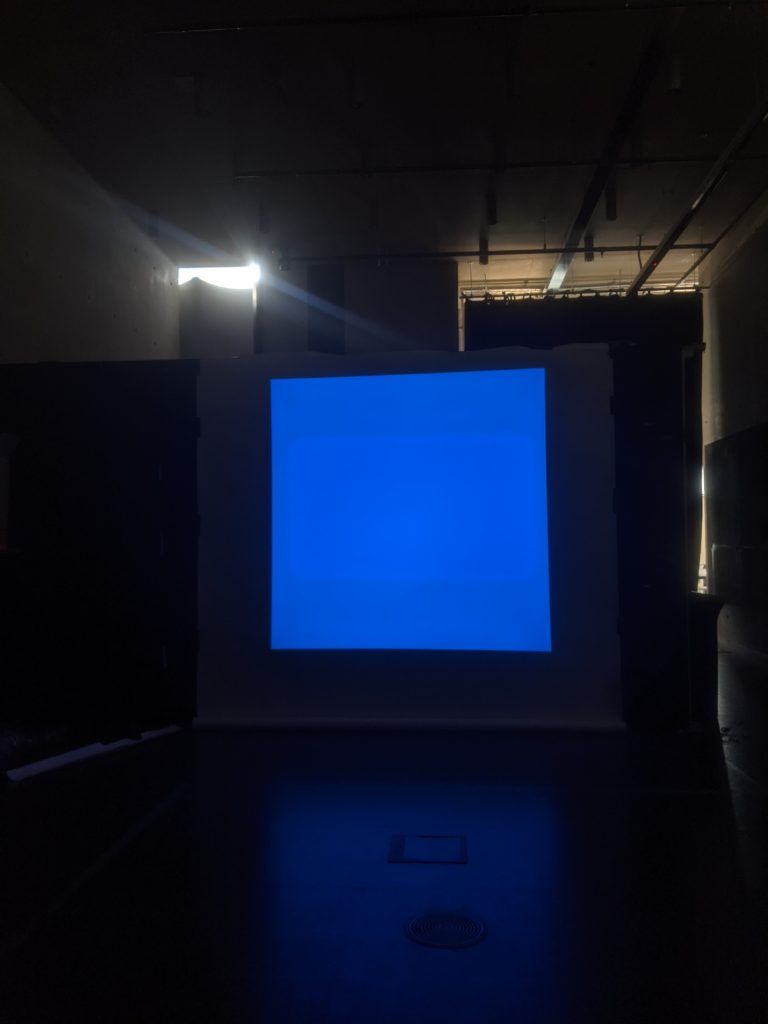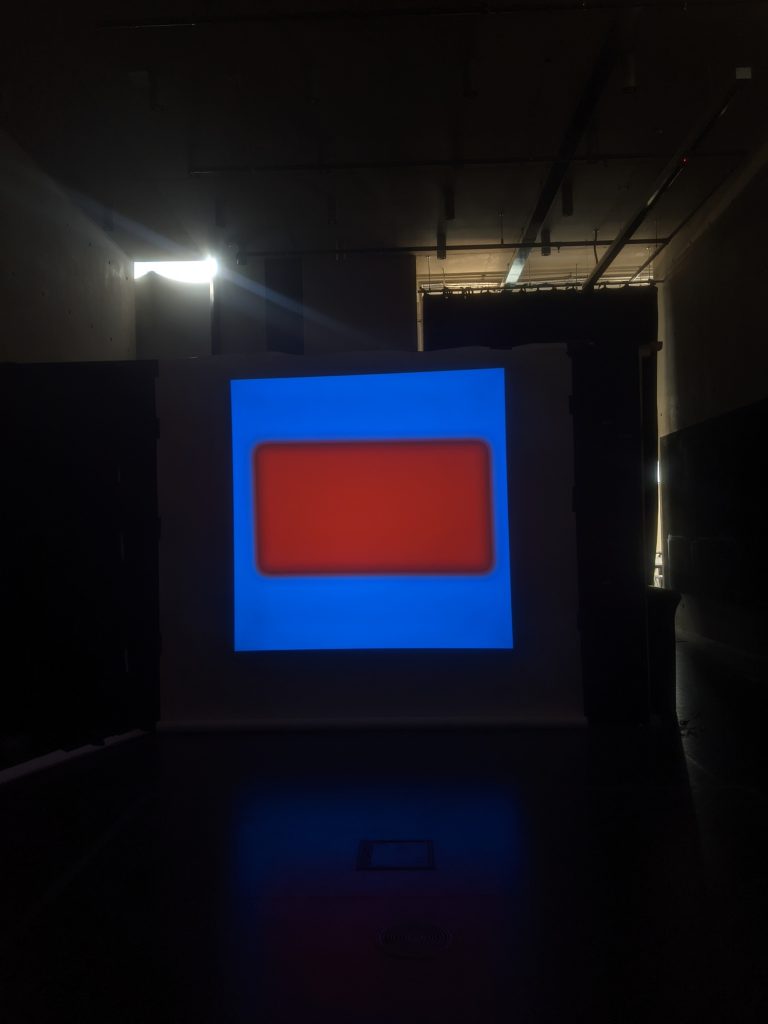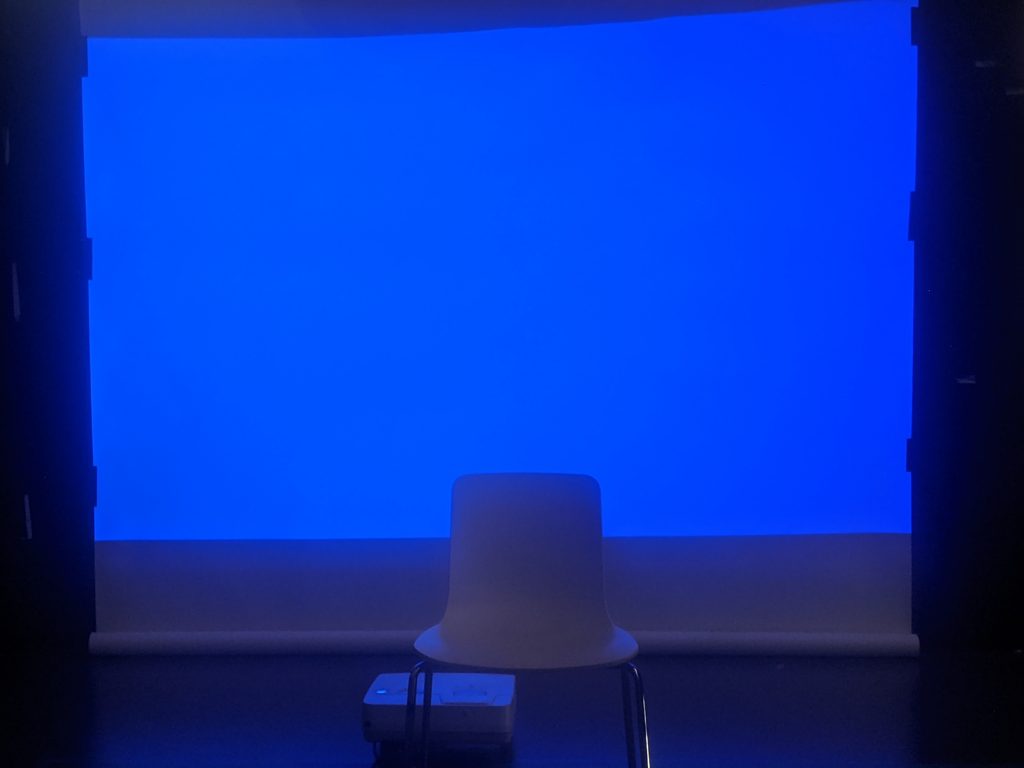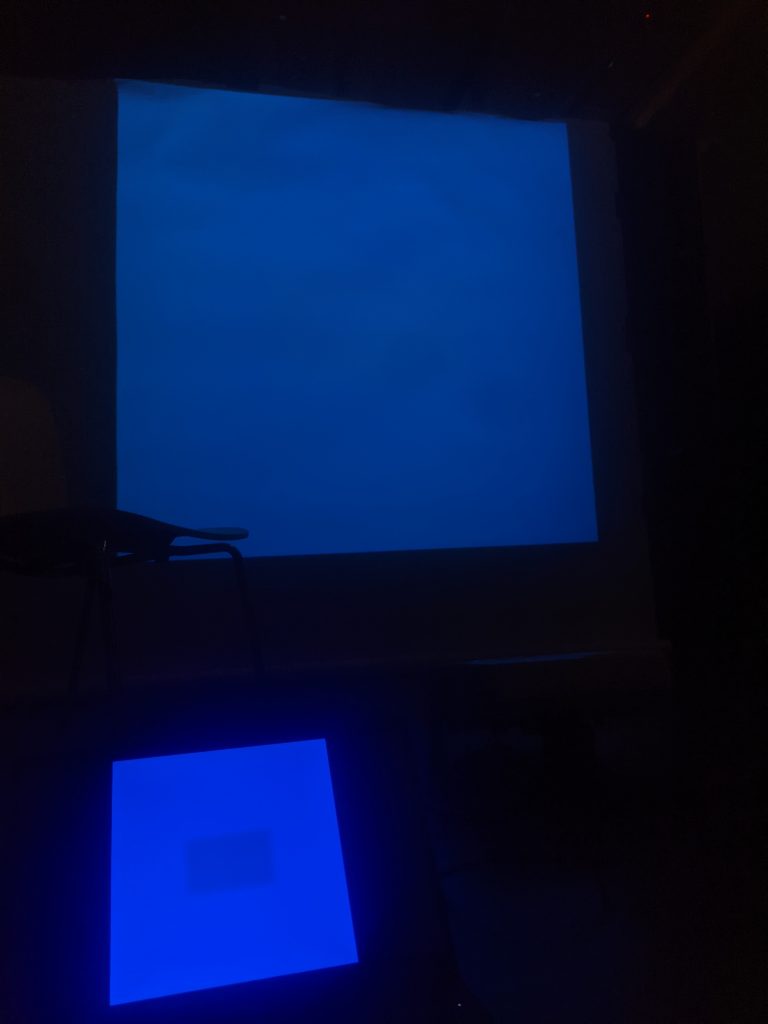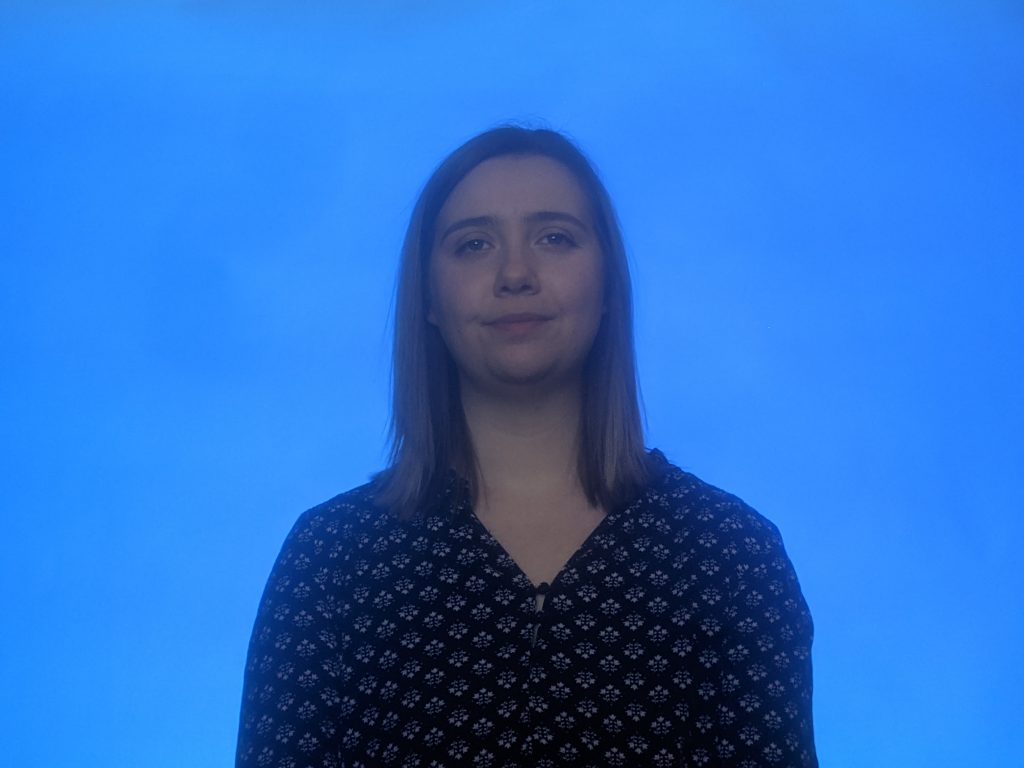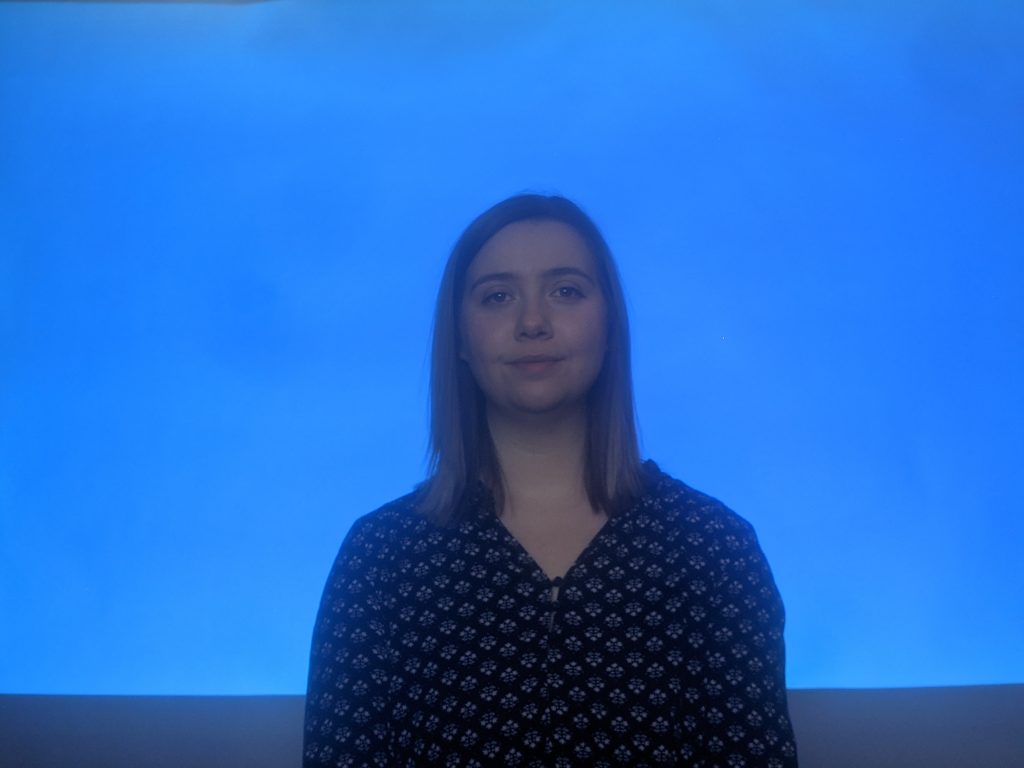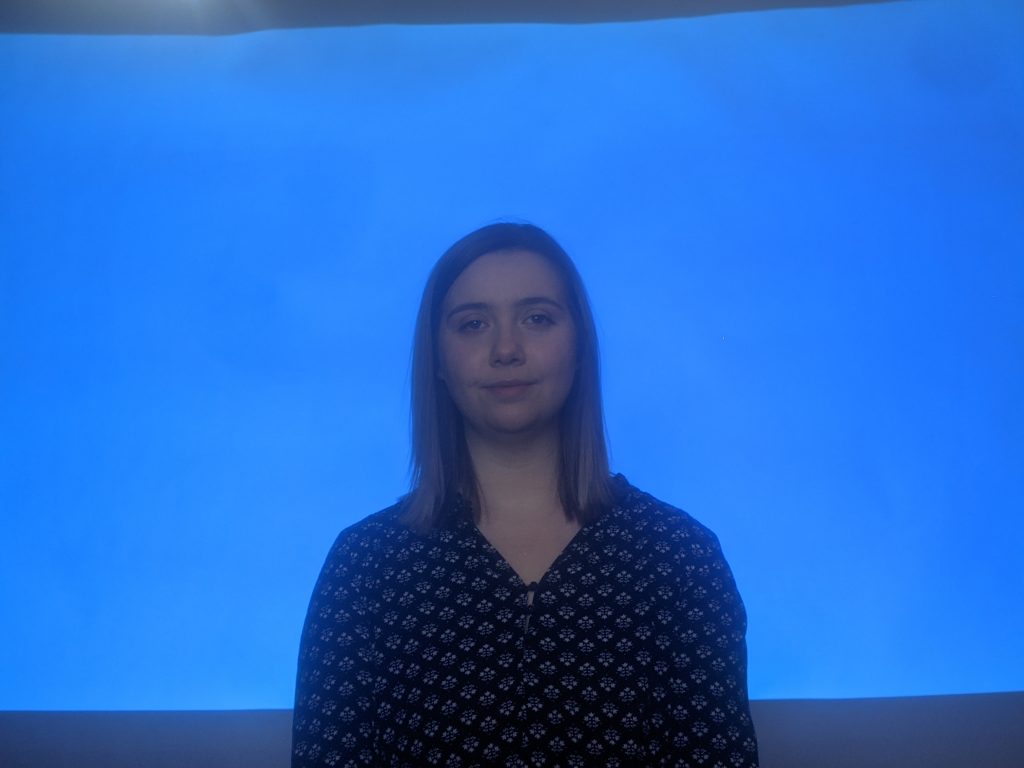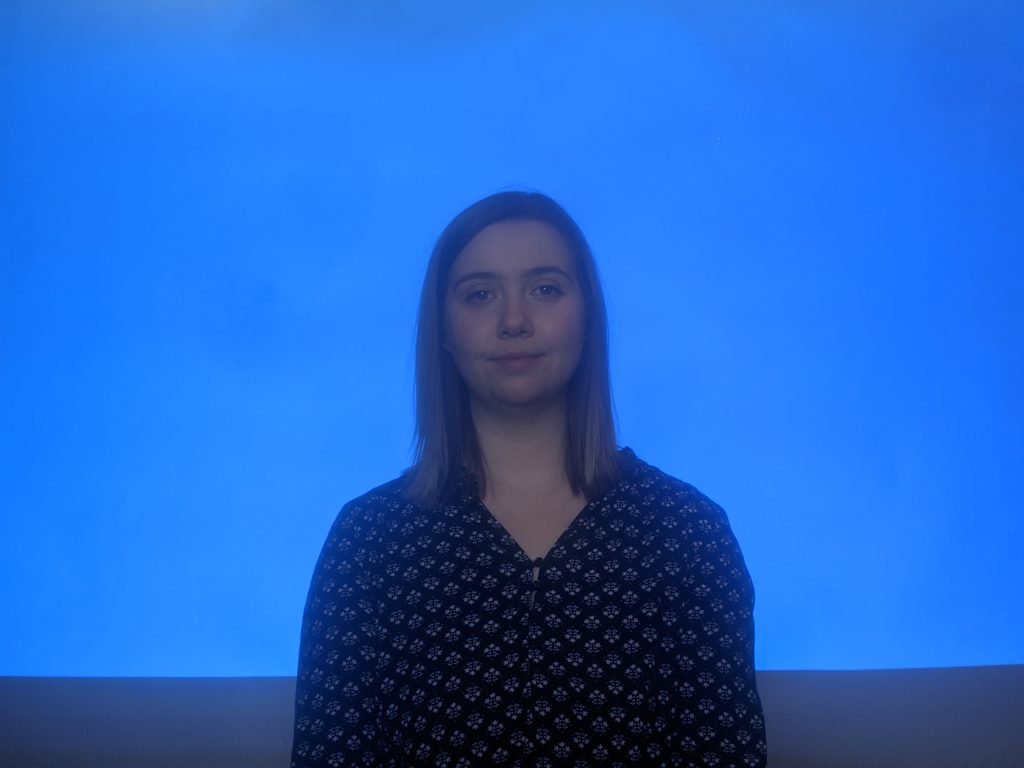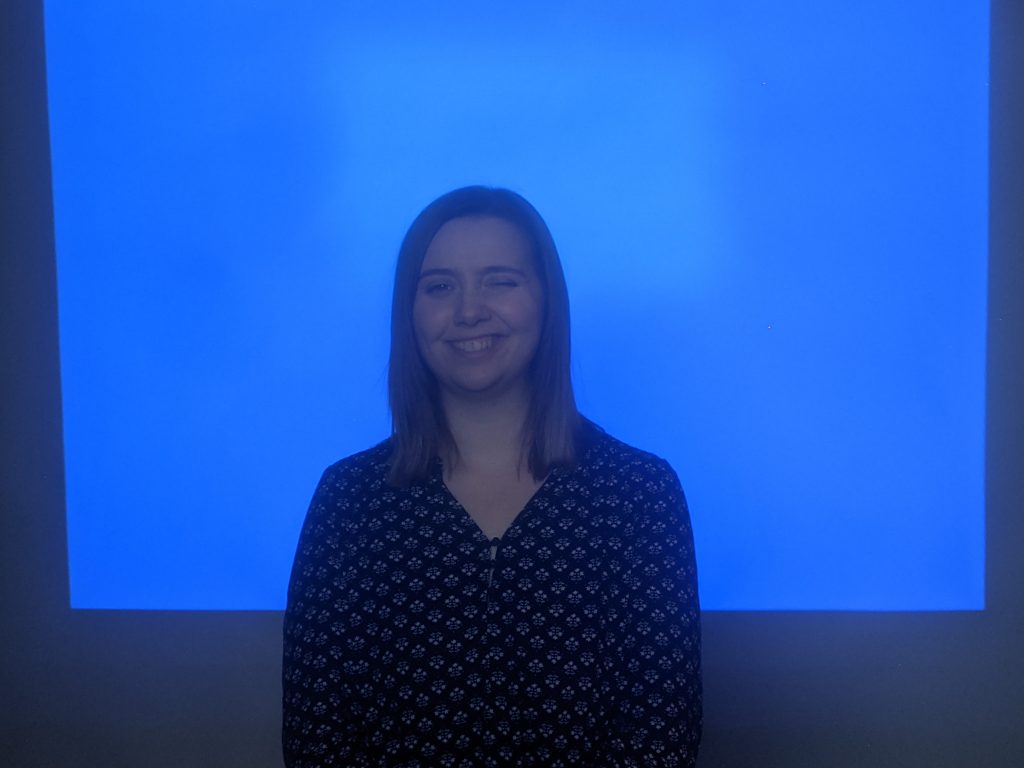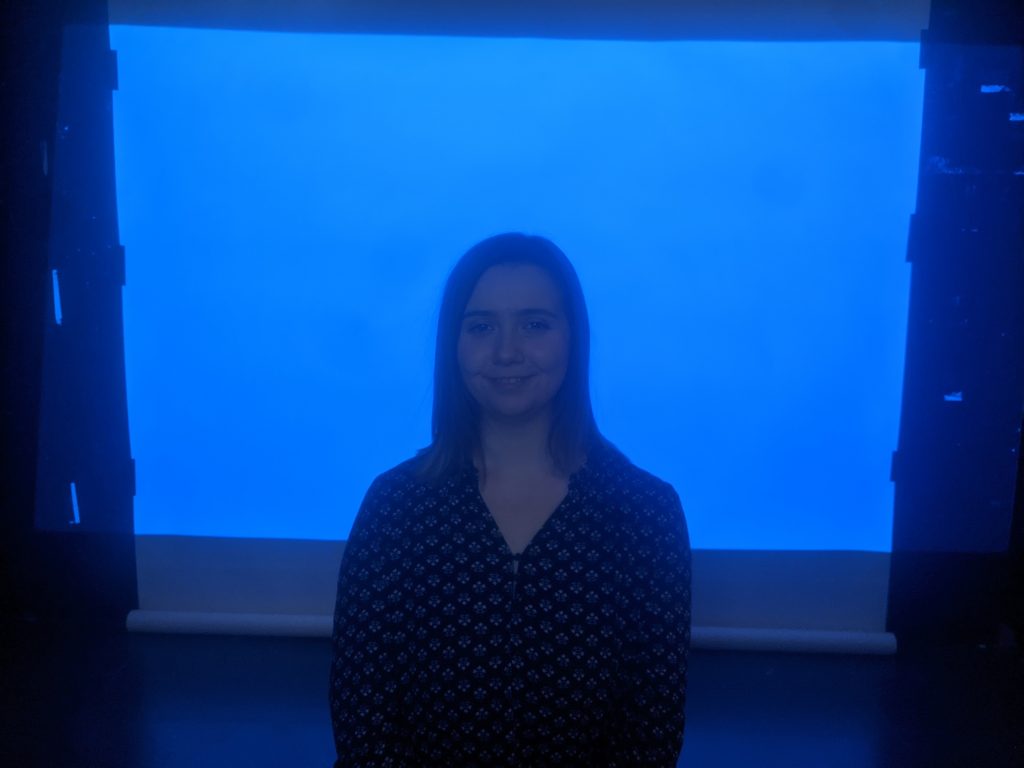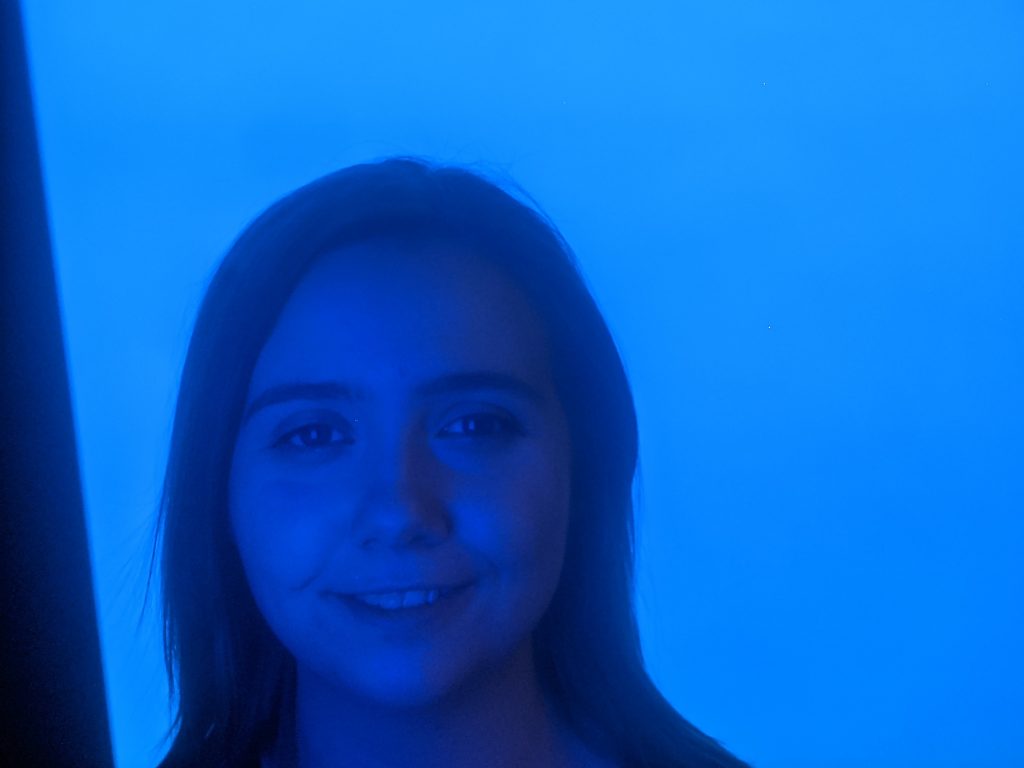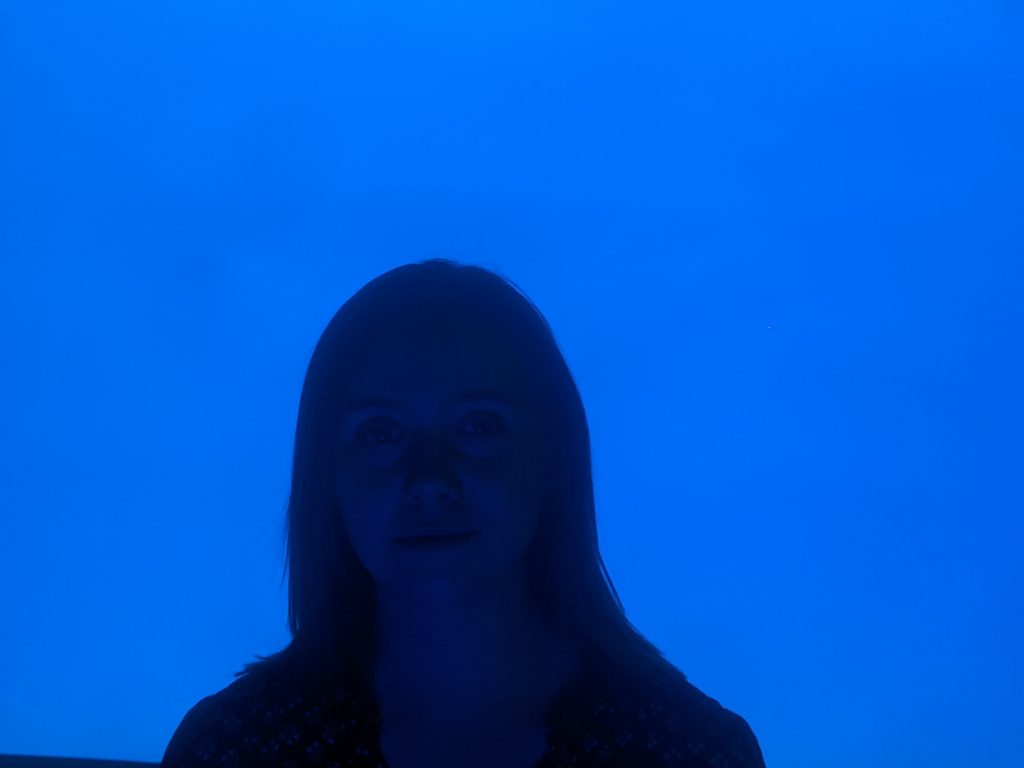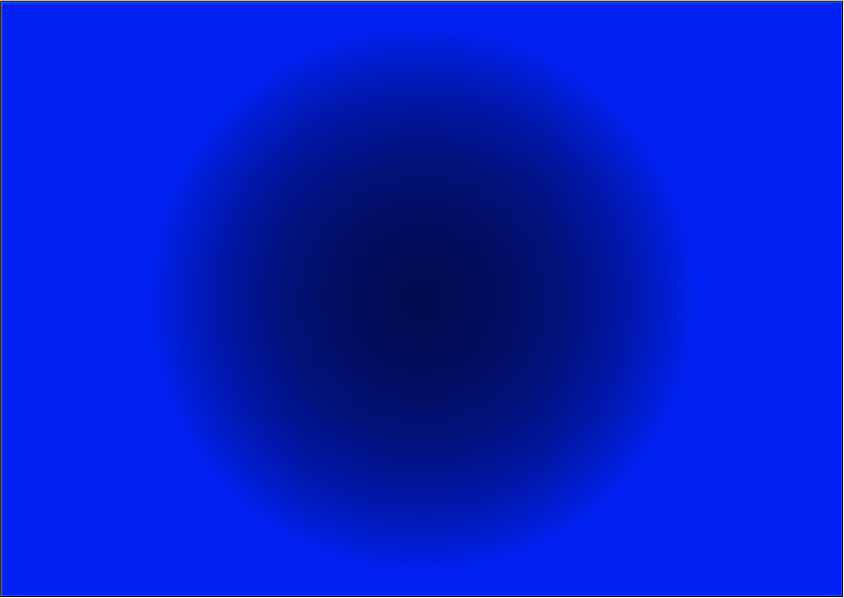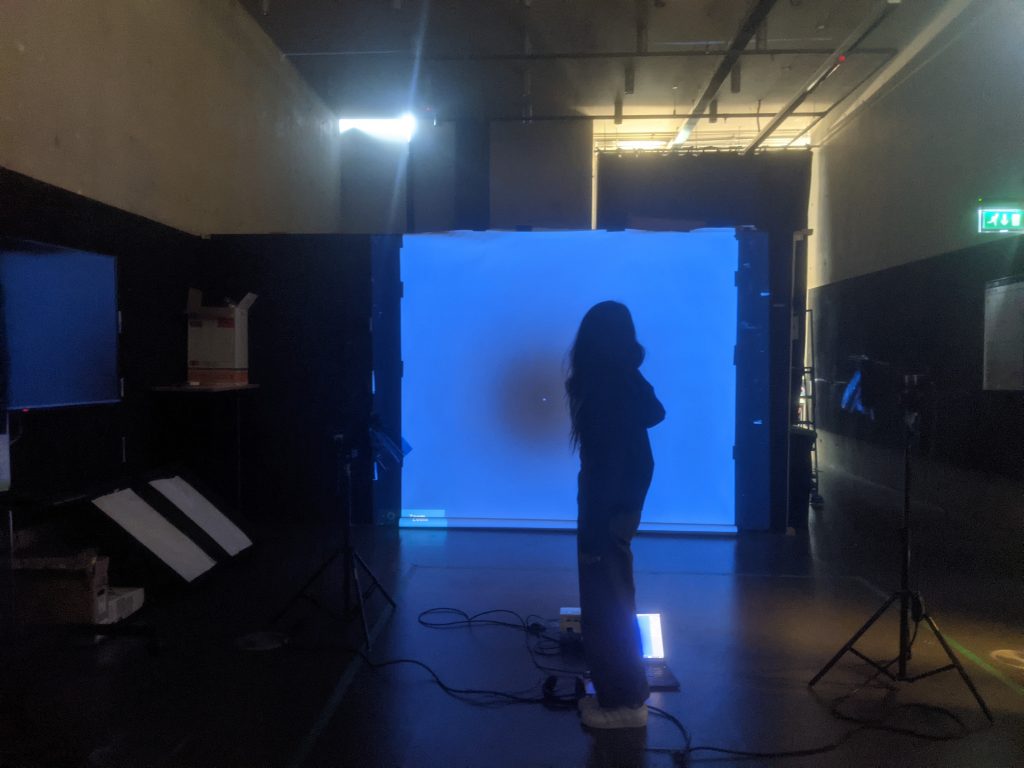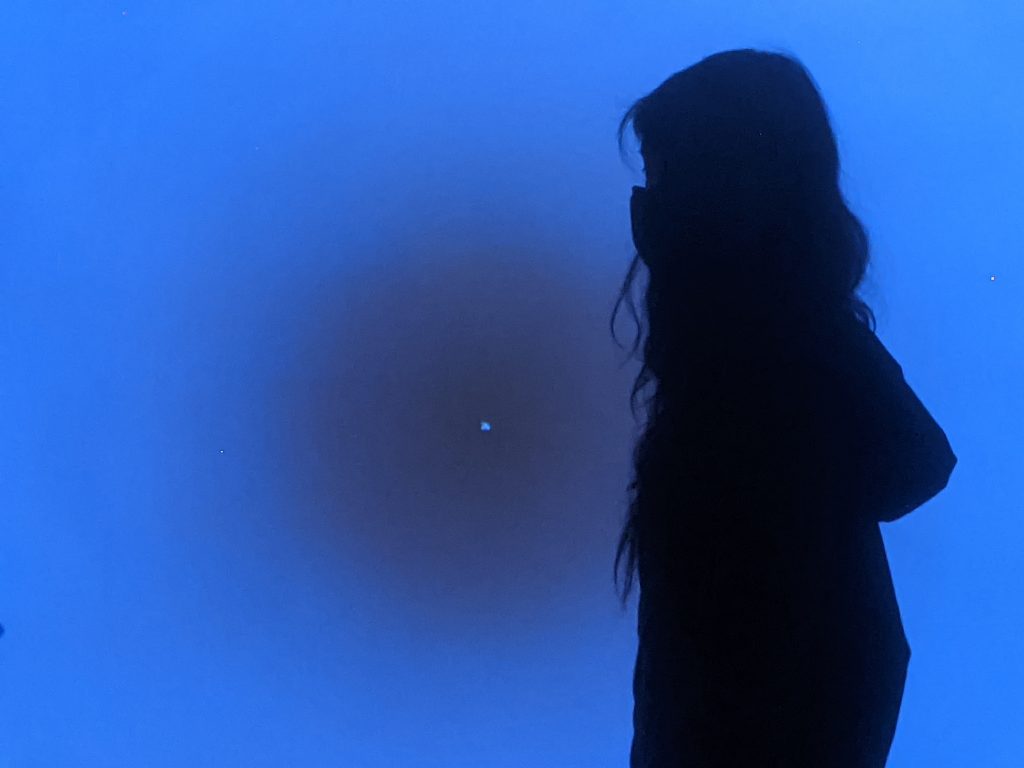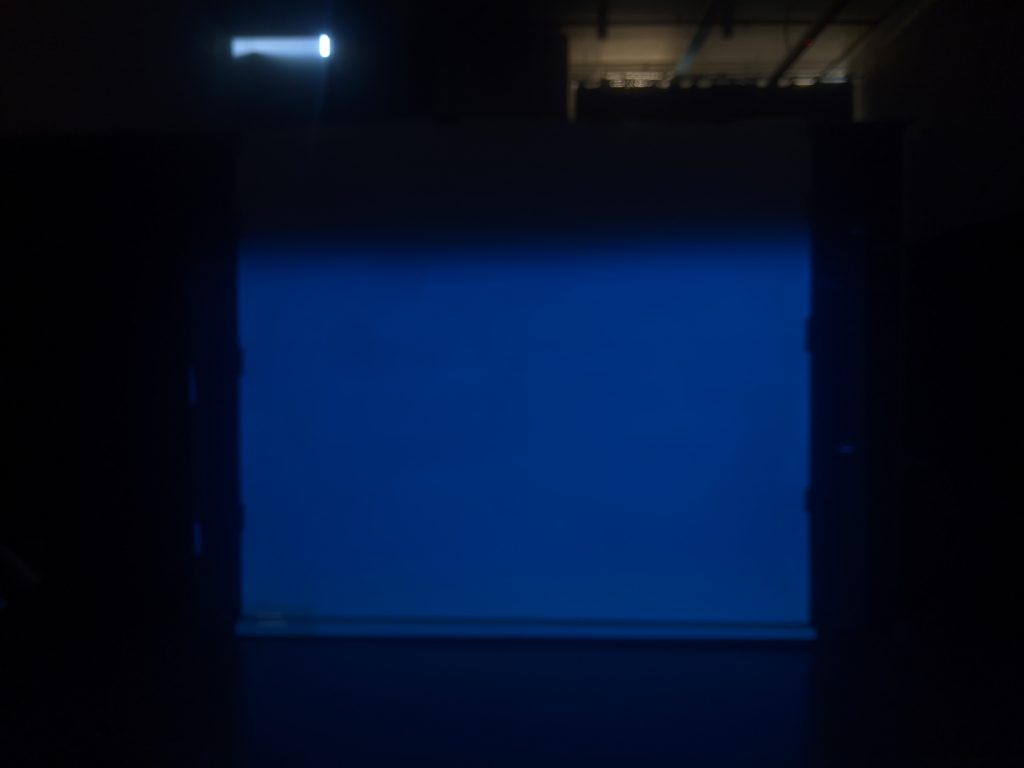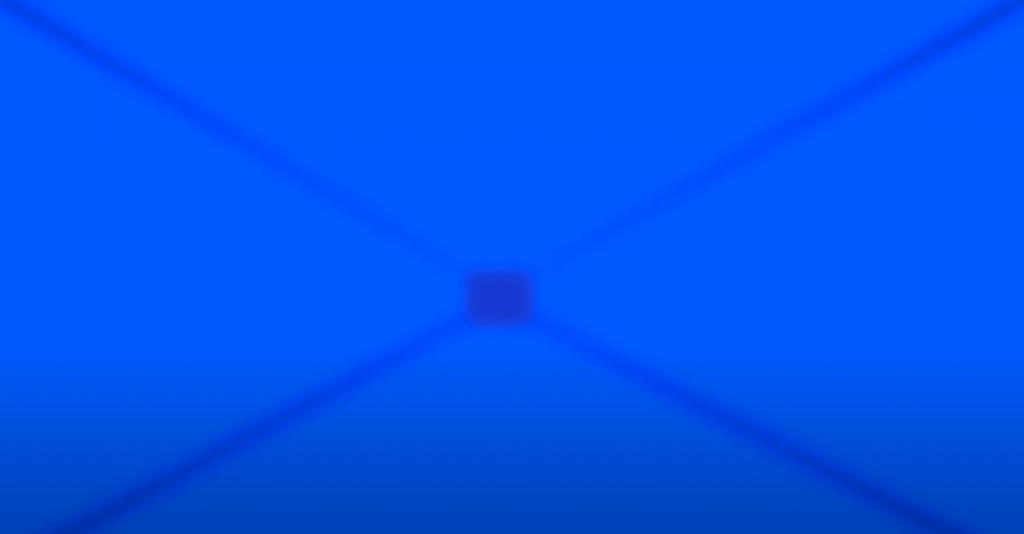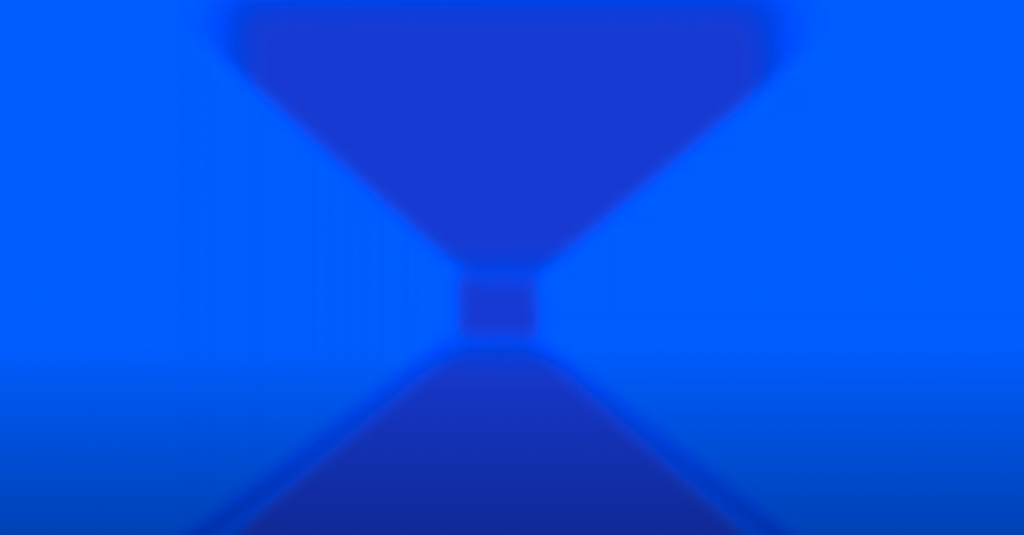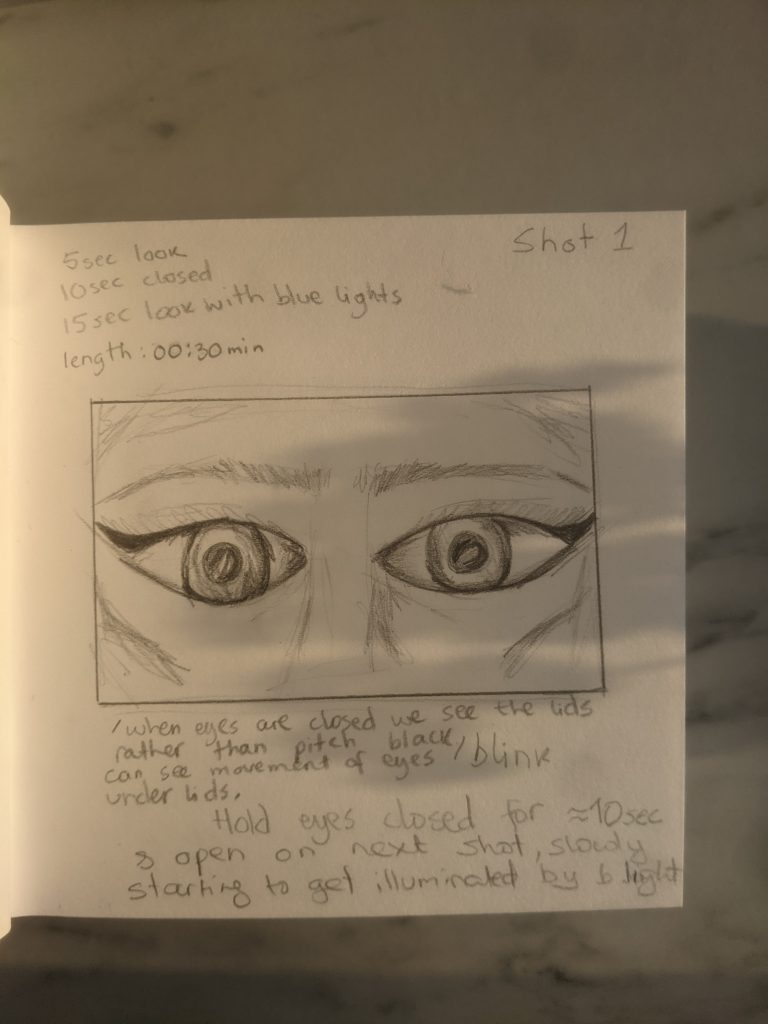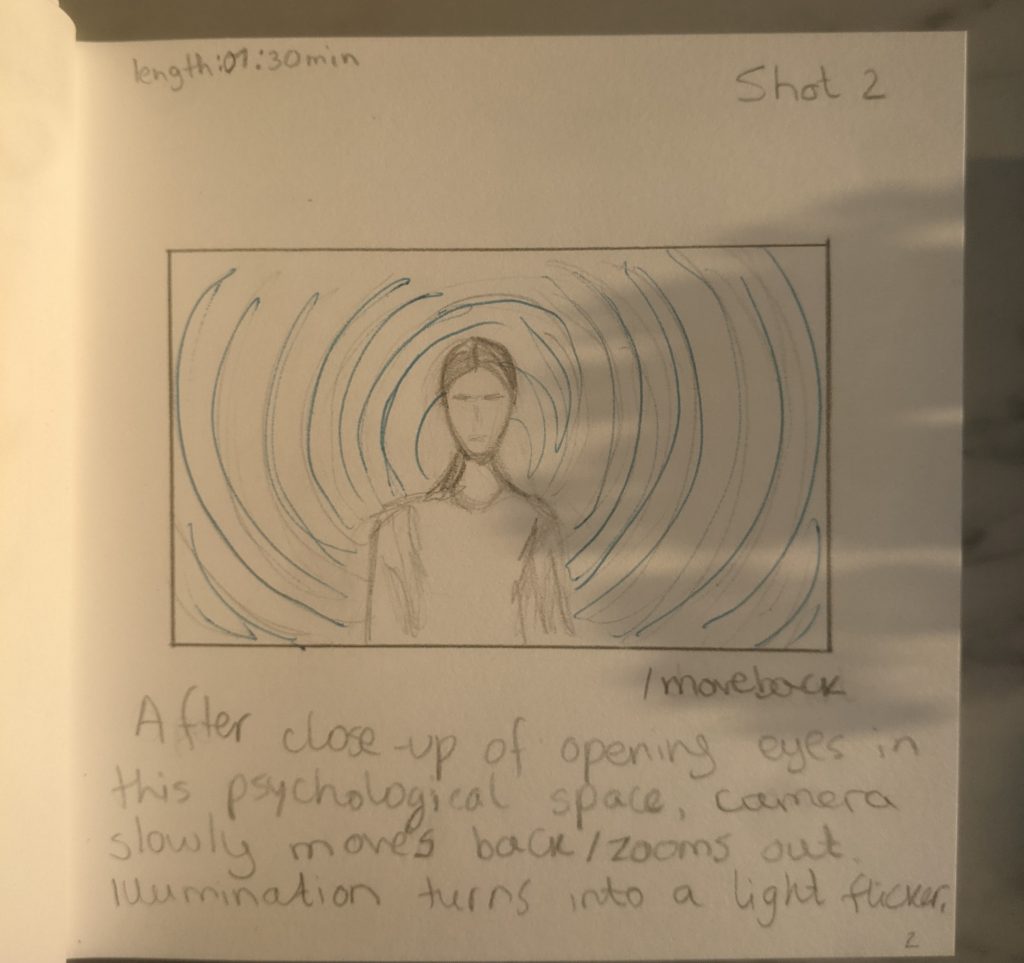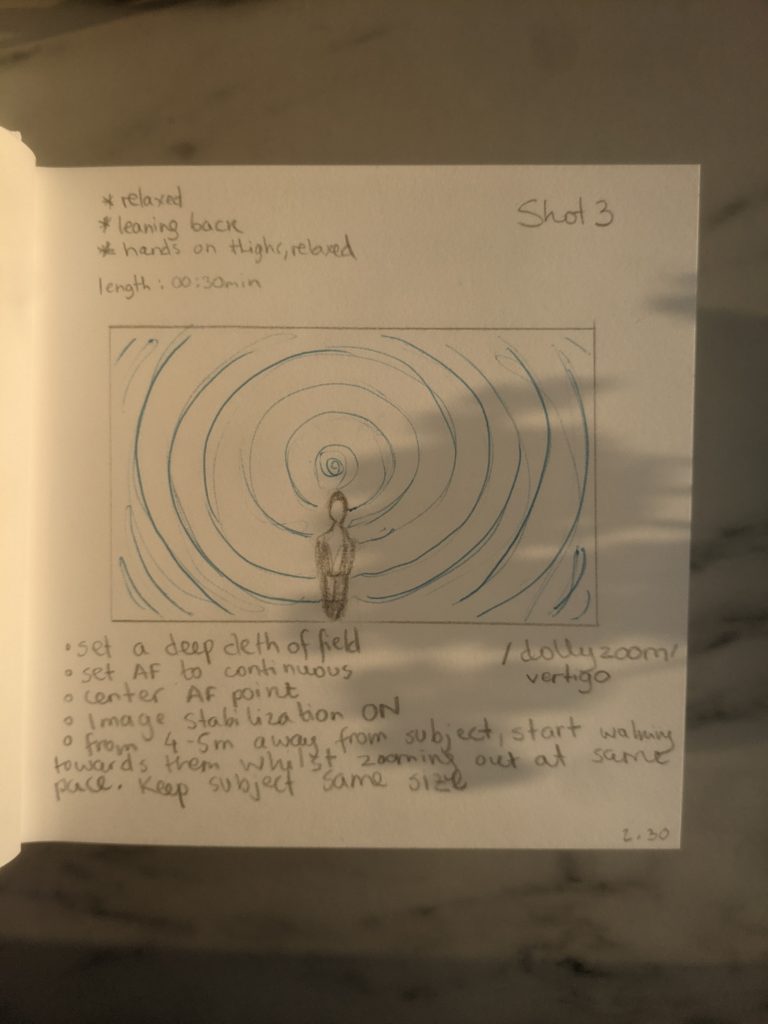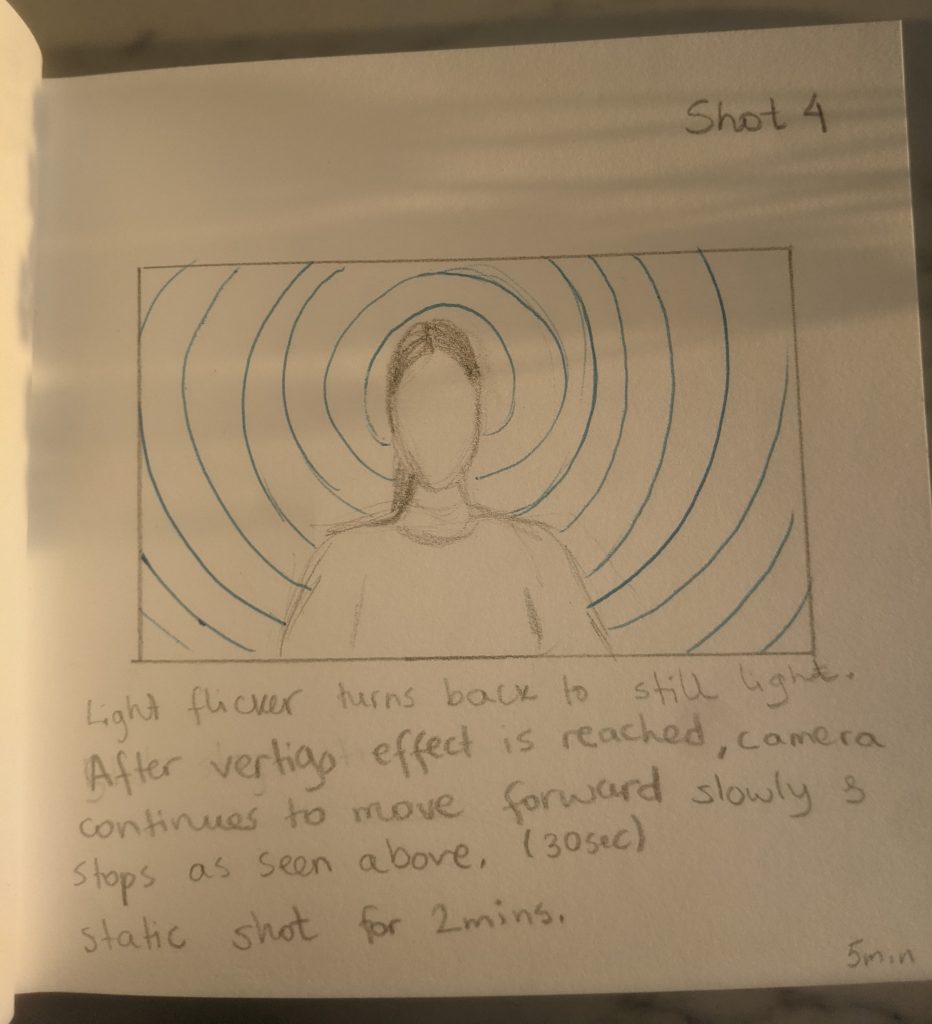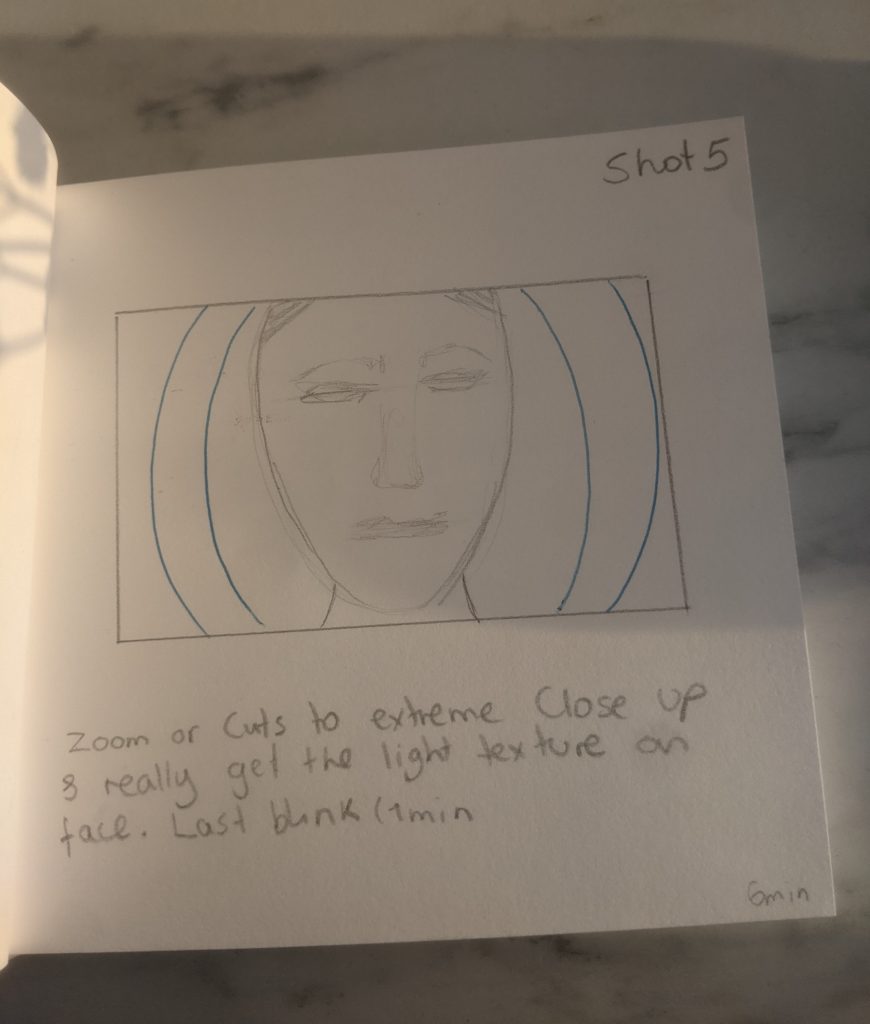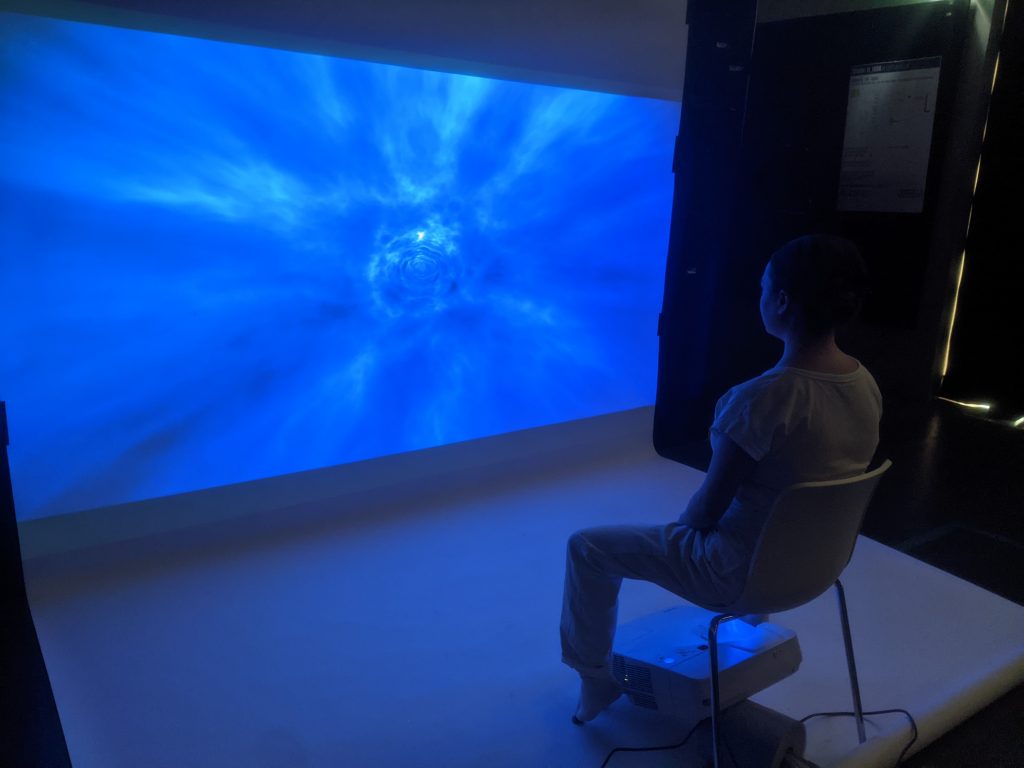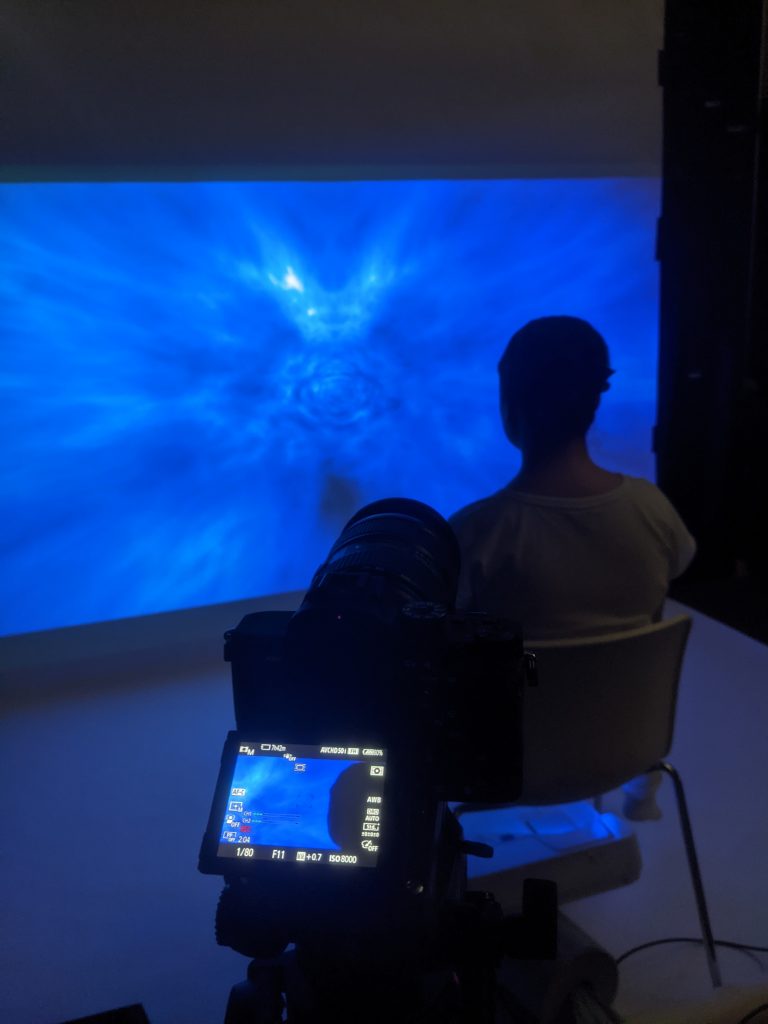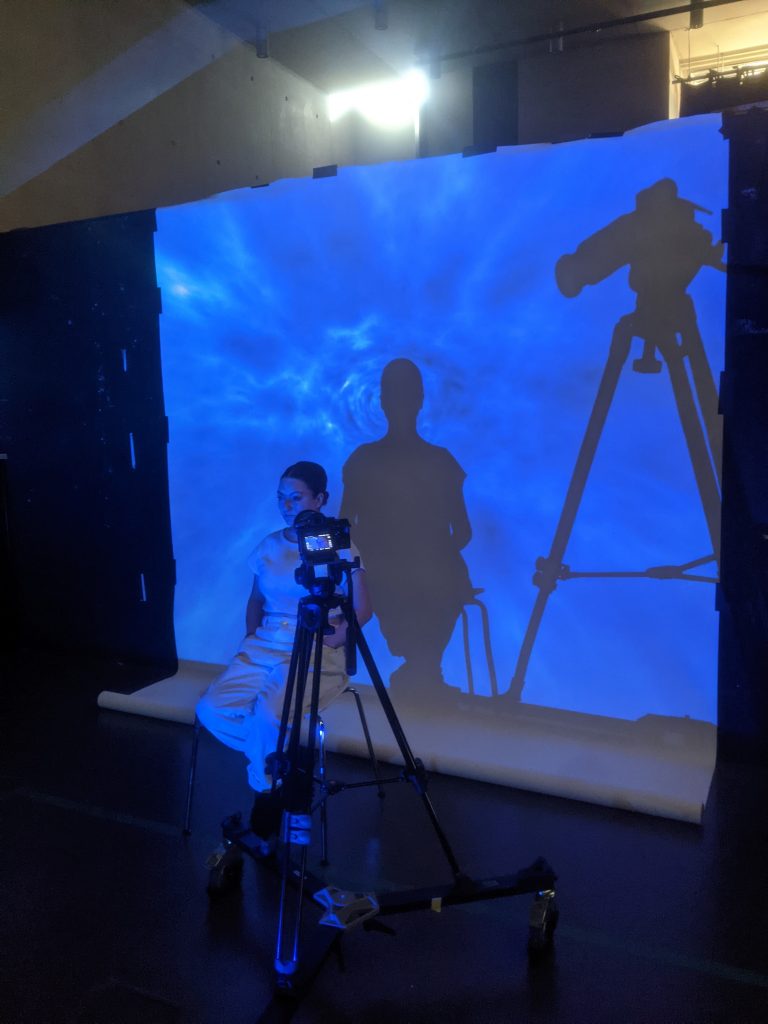This page is dedicated to the development of the final piece in relation to all of the up to date research and repeating themes within it. There has been such a great variety of practices and practitioners that I have been introduced to in the past few weeks and although I do not relate to all of them they all definitely had some interesting concept viewpoints, techniques of creation or simply new information that I had not considered before. The themes I found resonated most with me however are, Critical Forms of Observation and Imagined Worlds, whilst Spatial Tendencies and Materiality and Process have been a secondary inspiration.
The concept of the piece that I have been so far only hypothetically developing is rather fluid and not constraint by boundaries of a singular representation, meaning or explanation. However, for the purpose of bringing in some overall context to this stage of development I would like to note this simplified and bracketed synopsis. I am aiming to create a short experimental film which situates a character in an infinite space of blue light. This space aims to create a representation of a psychological space where the mind of the character goes as a way of escaping reality and finding comfort. This way of escapism is mirrored in the almost frozen appearance of the character as they are spaced out and it seems as if their spirit/essence is detached from their body. The body acts as a vessel of visualising the notion of this almost hypnotised state of escapism and relief.
Shaping Through Light
I have previously taken on some experiments which look at light, colour, reflection, manipulation of that light and the possibilities of projecting that light, however I felt like I needed to do a bit more research on how I might unintentionally create a certain effect through lighting which might communicate a different concept. In order to avoid said miscommunication I had a browse into different lighting techniques and came across a short film which tells an overwhelming visual story of how light affects ones face, the emotion it communicates. The short film is called Sparkles And Wine, directed by Nacho Guzman. The actress also undeniably knows how to communicate and play with the use of light through facial expressions. It is almost as if it is a live performance and she is reacting in relation to the movement, colour and intensity of light.
Infinite Space
The next step of the exploration of an infinite psychological place through light and space was to focus on the qualities of infinite space. In order to do so I had a look at some examples in film which followed a similar pattern of representing such a space which might also be interpreted as a void, ones subconscious, psychological or immaterial presence. Two movies which came to mind were Under the Skin (Jonathan Glazer) starring Scarlett Johansson as an alien who enters a void as a way of portraying the transcendent and intangible parts of her/it. Meanwhile, the series Stranger Things also uses a void to allow a supernatural character to access other realms of reality and explore psychological spaces of hers or other’s subconscious. I would like to carry on the total loss of depth from these concepts of psychological space. However, instead of achieving this endless space through darkness I would like to configure the intangible through light.
An artist who does something similar is
James Turrell
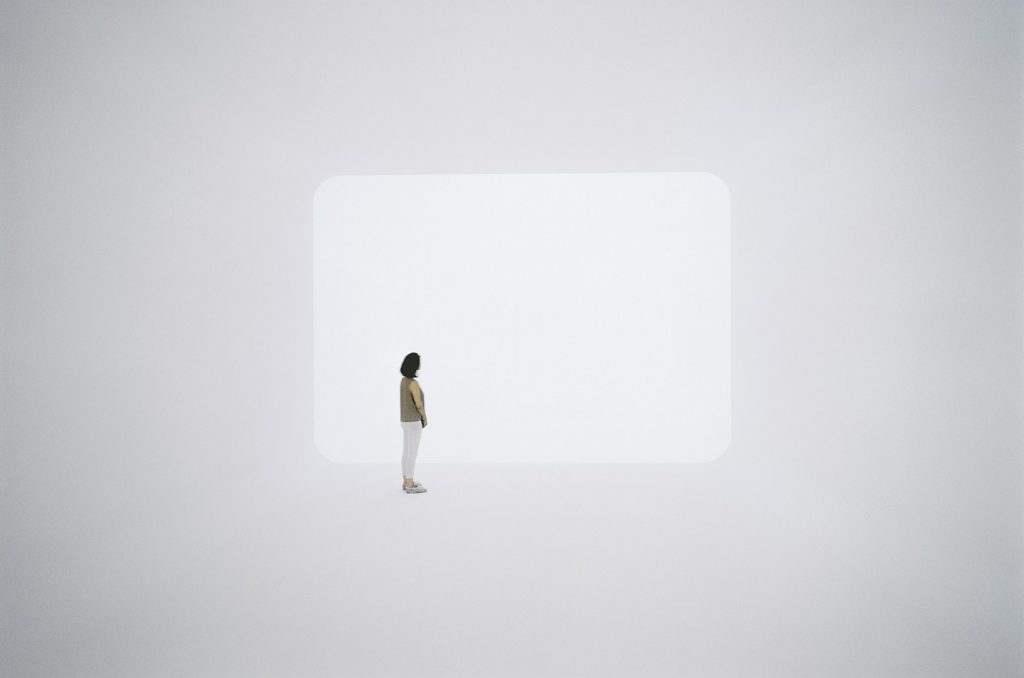
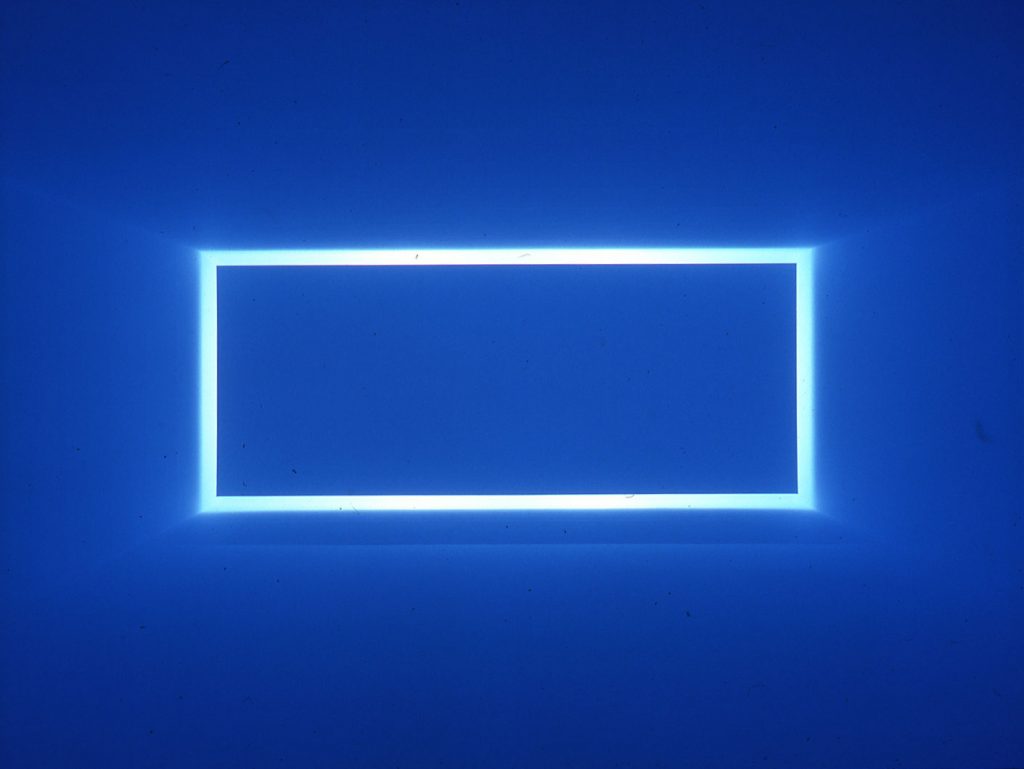
His work initially seems minimalist, which would suggest that he is only concerned with the reality of a subject and not with any sort of outside reality representations. However, his practice is more of an extension of minimalism. Turrell says he is more concerned with perception than production. The work is not about “objects in a room, but the room. The format is not things within space, but space itself”. In both works seen above he has defined an area which physically exists but hasn’t pinned down its boundaries. By doing so an endless space is created, one where the viewer’s depth perception is challenged. This is the type of space I am aiming to create.
Another artist who was brought to my attention, his piece “Blue” specifically, is
Derek Jarman
He was a director as well as a diarist, artist and more. All of this is clearly reflected in his film Blue (1993) which consists of a blue light screen and a performance of reading a collection of diary inputs often interrupted by musical compositions or other sounds. It is known for this voice over to be a documentation of his AIDS-related illness specifically to a time when he had become partially blind and his vision was disrupted by blue light.
As I watched the performance I became unaware of my surroundings, taken into a new reality of the blue light by his calming voice. I dozed off into the light a few times and didn’t register all he had to say through the voice over but there were a few quotes which stuck out for me. Despite this piece being very much about his inevitable and soon to come death, these quotes brought some sort of ease to the piece, rather than a crisis.
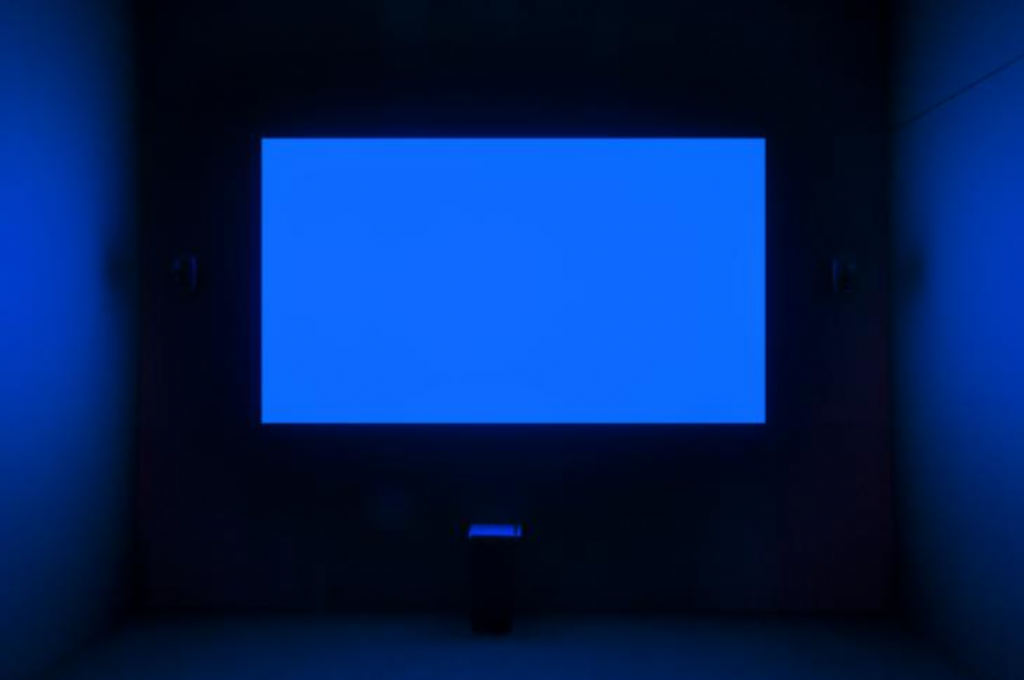
Derek Jarman – “Blue”
“a journey without direction…a journey into the unknown”
“no certainty, no sweet conclusion, I went in search of myself, there were many parts and many destinations”
“I fly in a super celestial space…universal harmony”
“floating in this immaterial blue”
Some of the above quotes even reminded me of the space that I am aiming to create. Even though Jarman is most likely referring to death or afterlife and I am focusing my explorations on a mental state of ones being alive, there are some similarities to the purpose of the spaces or places I suppose. The infinite psychological space I am aiming to create is very much a neutral, untouched, unaffected by external factors and non-physical space where there is not destination or direction. One that might be considered celestial and is immaterial.
Experiments with
Physical Space
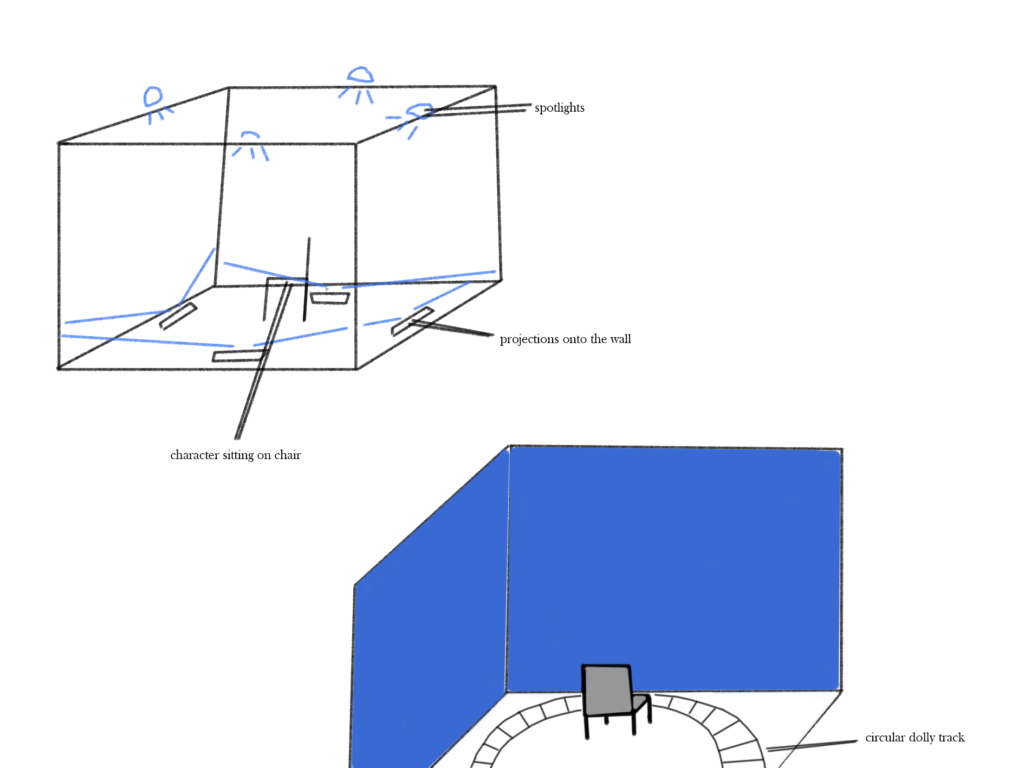
These are the original sketches of the space I was looking to create along with some notes on what extra equipment I might need in order to realise the concept of the movement of the camera, as previously mentioned as a reflection of James Whitneys films which explore altered states of mind through repetitive circular movements.
After finding out that there is no availability for the film studio for the next month I had to explore other potential spaces which I have access to. One being the photography studio. After measuring the space available as seen in the images below, I came to find out that the ceiling is not high enough to fit in the flats which I have access to through the university.
I then had to consider my options of achieving the effect I am looking for without building said cube. One possibility which presented itself was to work with 1 flat wall and a white backdrop on which I can project said infinite space. Although as the space has changed the projection of a flat image on a flat wall became questionable and so I had to expand the visuals of the projection into something that communicates depth. I will conduct experiments in the following week in order to find out what graphic will work best for the creation of the infinite blue space.
more on Space
Based on the lack of availability for space and the measurements not adding up to the low ceiling in the photography studio I realised I have to rethink the physical space and the idea of having a cube like surrounding.
In the sketches above we can see how I plan to use a space I have availability to with minimal resources such as a simple white backdrop, 2 dedo lights and also potentially using a Flat Screen as a way of illuminating light onto the characters face, were the light can be manipulated through a previously adjusted video which I will just have to play, meaning that real time manipulation will not be needed for on of the light sources.
video I will play on the TV
Following this I went into the studios to arrange the space in order to see what works best in regards to positioning equipment as well as what projector to use due to the inability to fully darken the space I had access to. In the process of doing so the projection of simply blue light did not create this infinite depth effect I was looking for so I went on with some further experimentations of how to create depth through the shades of 1 colour. I started off with some experiments in Premiere Pro which were highly inspired by James Turrel as seen below. The first experiment was introduced by Jim Hobbs as a suggestion of a simple way in potentially creating depth through colour.
As I was really set on only using shades of the colour blue, I re-evaluated the experiment and adjusted it to incorporate interchanging shades of blue. It was working great on screen, the shades were vibrating off of each other and were creating this contradictory static flow of energy which led to suggestions of infinite space.
Unfortunately as soon as the infinite space graphics as seen above were projected the composition lost its detail and became simply a blue light, bringing me back to square one. It seems that the previous experiment only worked due to the high contrast in colours which were easily read and interpreted by the projector whilst the hues of blue were too intricate for the projector to register. I even tried out using 4 different projectors and although some executed the concept better than others, there was no overall success.
Following the unsuccessful graphics of the projection as seen above I went on to expanding the idea into something more solid and obvious to the eye. I used lines as if creating a corridor as well as circular shapes, creating a horizon through different high contrast hues, as well as adding a much darker gradient as seen in the gallery below.
The gallery above shows that this creation of depth was still not successful in this experiment either. The creation of a silhouette however was something interesting that happened by accident and although I though about taking it further I quickly realised that it makes the piece much more ominous and unsettling which would not contribute in communicating the concept of a calm and relaxing psychological environment only existing in ones mind, where escapism might happen and where a neutral being exists. Please note that the last 2 photographs in the gallery above are also videos and they can be found on these two links: BlueDepth and BlueDepth/2 . The video versions also incorporates some movement through gradually changing hues.
Following this experiment I decided to move on from this minimalist approach and really focus on how I can best achieve a depthless space, one were time does not exist and one which is neutral, not affected by any external factors. What came to mind in that instance was that I could aim to visualise how sci-fi movies interpret time travel, which is often in the form of a portal in a cylinder tunnel shape, as for instance seen in Doctor Who or more recently Avengers: Endgame. As I am still learning how to use after effects I thought it would be handy to start with a tutorial of a space-time vortex visualisation and what I found was this Warp Speed Tutorial. It was a great starting point and after some experimentation and adjustments I came up with the final graphic in portraying this infinite space through a projection on 1 white backdrop, which I called Infinate Space Tunnel.
Storyboard & Further Experiments
The storyboard is more of a guideline for this project and not an indefinite follow up of shot by shot.
I decided to create this short storyboard as a guide for the production day. As the original idea for the camera to simply spin around a static character became impossible due to available space and equipment for creating the cube, a new idea for a white backdrop was introduced which indefinitely changes the possible movements for the camera. Due to that I also added some notes to the sketches above as direction for what are some possible movements, durations and concepts behind each shot. One shot which I found very important is Shot 3 as it would really contribute to scale and the idea of infinity. Although I am sure the space would not allow for such a shot, I felt it necessary to visualise this important shot within the storyboard and mention it in writing as a way of communicating possible developments of the final work.
I also realise that all the sketches above show the character straight on and this singular viewpoint might not work well in communicating the timeless and limitless space. Instead I will experiment with different POVs during filming.
Equipment, Props, Costume
What equipment do I need after figuring out that the set up will be a 3meter white backdrop.
- camera – Sony A7SII
- Lens 1 – Sigma Art 18-35mm F/1.8
- Lens 2 – Canon 24-105mm f/4 Lens
- Gel Location Pack for the lights
- Wheeled Tripod – which will allow me for more movement than a dolly track
- possibly a Polarizing filter just to try out if it would add anything to the blues
- White Clothing as it would reflect light of the projector well
- A chair for the actress/actor to sit on
Thinking about flicker…
I have previously come across issues with flicker and it became an issue once again as seen in one of my experiments below. In order to overcome any complications at the final filming I have decided to do some detailed research instead of relying on adjusting shutter speed, aperture and etc on set which could become very time consuming which would be very inconvenient considering my time would be limited based on the availability of the actress/actor. One video which I found very informative and useful in breaking down all the aspects of how flicker might happen can be found here.
Things I need to remember and apply are that 2.8/f best aperture for filming. I want a higher f stop (lower aperture) in order to have a wider depth of field/more elements in focus, (but also not too high as I still want a good amount of light coming in as I am filming in a dark environment) such as the background. I don’t want the projection to be out of focus as the graphics on it will be a very important part of realising the illusion of infinity.
Flicker happens when LED is out of speed with the frame rate or shutter speed I am using. Make sure that each frame is receiving the same amount of light. To do that if I am filming at 60fps. Shutter speed can’t be more than 1 over the frame rate. Lighting in UK uses a 50 cycle/hertz system which means that the light fluctuates from darkest to brightest 100 times per second which introduces a flicker. Based on this I can shoot at any frame rate which is 100:1=100, 100:2 =50, 100:4=25 . If its an American system it would be 60cycle which is 120 times per second which means I can shoot at 120, 60, 40, 30, 24fps. When there is a frame rate which is not evenly divisible I’d need to get the shutter speed aligned. Can use website Red.com/flicker-free-video to calculate the right shutter speed. Easier to shoot at shutter speed rather than shutter angle in order to avoid the flicker. Highest frame rate we can shoot in without getting flicker is 120fps, anything more, I would need to buy specific lighting which works differently so that the flicker doesn’t appear. Projectors apparently have a 72hertz refresh rate which would mean I can shoot at 71:3=24fps
Generic lighting tends to operate at frequencies of 50 – 90 Hz
Filming Final
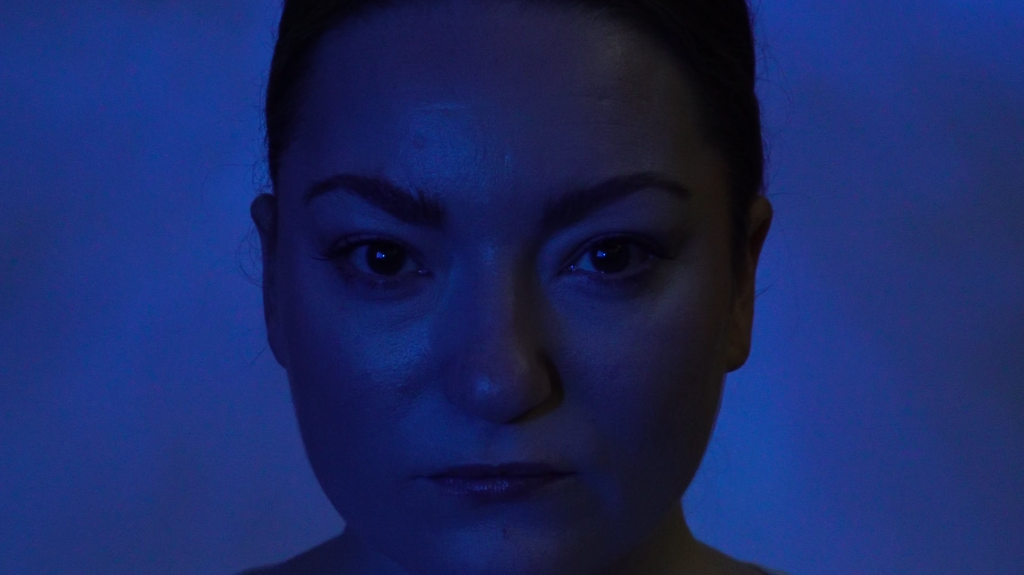
After establishing the location, equipment, props and finding the right actress the day for production began. I had 7 hours to film a rather short film with a very simple storyboard and everything was set in place. Unfortunately I had a lot of technical difficulties which didn’t allow for the realisation of the storyboard which I had planned for, however the storyboard was more a of a guideline and I had anticipated having to experiment and develop the idea even in the final production which made the experience even more exciting in some ways.
The actress was also informed in interviews that the process might be rather experimental and she is welcome to interpret the experience as she feels right as well as have her creative and performative input. She shared that she didn’t really feel she had to act out the state of mind of the character in the creation of this psychological space all that much as both the projection of the vortex as well as the flashing lights were aspects which contributed to her actual state of mind becoming rather dozed off and wondering into her psychological presence rather than physical. When it came to directing I had to input the minimum such as suggesting a pose to sit in or reminding her to do the least blinking possible as this is very unnatural and unfortunately rather difficult to accomplish.
I really didn’t want blinking because in some ways it breaks this illusion of trance. As trance is a state which lacks a response to external stimuli, it only seemed right for this unrealistic portrayal of a human, who doesn’t have this natural need or response to light to blink. Despite it being a small detail, I feel like it bring a great contribution to creating a sense of unease and unreality. A sense that something is not quite as it seems, similarly to how simulation is represented in eXistenZ or others. A person might seem ‘real’ but there is something not quite right, something missing. As this psychological space only exists in ones mind as a void for neutral existence and escapism, it is only appropriate for the representation of their physical body to not quite live up to what we might know to be a human body.
Below we can see some BTS photographs of the production which show the set up and the variety of arrangements I had in order to achieve the digital realisation of the infinite space. I started off by positioning the projector below the chair that the actress was sitting on in order to get a good sized projection as well as not get any shadows and not get the projector in the shot. That arrangement was mostly working well, however I didn’t manage to get some long shots which could be due to the space I had access to or because I didn’t choose the right lenses. Either way, I worked around that issue and nevertheless got some strong shots.
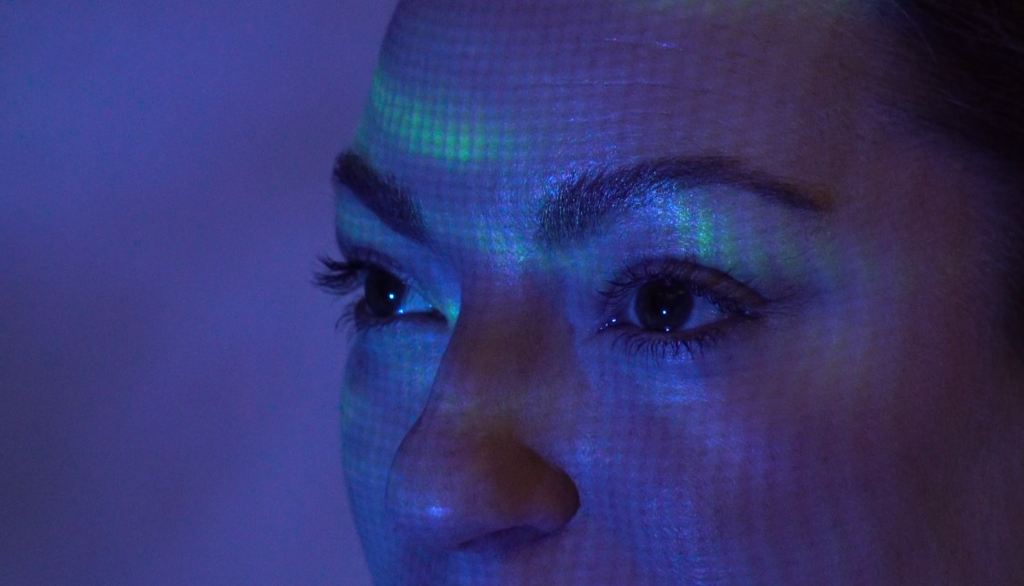
I even went further into using the projector onto the actress where shadows were created however I only framed the face of the actress in the given shot in order to get this more intricate illumination in comparison to the simple blue light being emitted from the Flat Screen or Dedo Lights. An image of that shot can be seen above and although it looks beautiful, I do not believe it contributes to the concept at this point. As the piece develops in post production my perspective might change and I might decide to use it.
What didn’t work well and how did I resolve it?
One complication that I came across was that the tripod was not attachable to the wheel base, although I quickly though of a solution which was to tape it and that seemed to work pretty well in terms of stability. The wheel base was also unfortunately stiff at times and as the space I was using was not a film studio it had a lot of uneven places and bumps, which made it impossible to move the wheeled tripod around freely and smoothly. This restricted me massively in getting smooth shots which was a very important part of executing the concept as there was a sort of unreality and simulation that played a part in creating this psychological space and anything short of perfect movement looses this uncomfortably over the top perfect quality and instead introduces a human touch. In order to avoid ruining the illusion through my movements, my aim became to have minimal movement in the shots. At one point however I became irritated at the lack of possibility of observing the space and though I wold try to incorporate some movement, but instead of aiming for it to be perfect and never getting it quite right because of external factors, I simply decided to take on the approach of Fraser Muggeridge and Peter Burr in making my process random and rather sporadic, as well as incorporating some sort of repetition and circular movement which was in my original concept of reaching a sense of hypnosis and higher spiritual reach through movements similar to the ones used by Sufi Whirling Dervishes.
The lack of different POVs was also an issue and so instead of moving the camera around the subject, I moved the subject so that it seems like that I am filming them from different angles although in fact they are just facing a different way. I could only achieve that through static shots of course, however still it gives a wider range of perspective of the space which I hope will create a better illusion of its infinity and its psychological existence.
Looking at the footage later on I reminded myself of the main aspects which I need to focus on during the editing. Them being the gradual change of the flicker of light being emitted through the screen as a means of communicating a hypnosis state as well as editing out as many blinks as possible for that same purpose. Secondly a fluctuating in and out of focus also became vital in the filming process as a means of communicating the different states and intensity of this psychological state and the stability of the characters existence in the space presented. Lastly, I have to be very careful and tactical on how I use the different POV shots in order to really communicate and realise the concept of a psychological space, rather than the shots coming across flat and simply as a projection on a backdrop. This last point will probably be the most difficult and I will very likely not be able to execute it to the standard I am aiming for. Nevertheless I will try my best.
Furthering the Piece through sound
In order to further this piece I wanted to introduce some sound to it as well. I previously delivered a seminar on how Spatial Tendencies of sound can be used in a non-literal sense to contribute to the communication of altered states of mind of characters in films and games. More specifically, how properties of sound which tell us more about the physical space we are in, are also used to communicate psychological states. For instance physical spaces such as a tunnel or a cave might be examples of where echo and reverb happen when sound is introduced. Yet these same properties are ways of showing distorted perception due to mental illness or alcohol/drug abuse.
In a Understanding Fear and Game Sound, Tom Garner goes on to explaining how:
“Alongside reverberation, an important function of the audio effect delay is to provide architectural and material information regarding the listeners environment: long reverberations and delays suggest reflective spaces that are large in comparison to the listener who can be made to feel quite small and lonely through this technique”
The text also mentions frequency manipulation or equalisation (EQ) to be a factor affecting the sound’s emotionality and aesthetic. These same tendencies of sound which can be used to communicate perception of environment, but also emotionality and aesthetic, can be applied further into cognitive impairment representation such as the way it has been done in the Inpatient, a game about a character suffering from amnesia.
One movie which I have previously mentioned in relation to the representation of a void is Under the Skin. It is not only a visually phenomenal movie, but the soundtrack by Mica Levi, Lipstick to Void, exceeds in communicating the celestial creature and the void as its transcendent and intangible parts. She has used a variety of pitch as well as echoing sounds, delay and reverb which all together create this disturbing sound of nothingness, loneliness and despair. If I were to take example from Mica Levi and simplify the idea of what a neutral void might sound like I start thinking about space, as in outer space, its infinity, the possibilities it holds as well as how small people are in comparison. There might be loneliness or stillness, tranquillity. And most importantly not much sound at all. That is what I imagine anyways. And so, to develop my piece further I will simply add some white noise sound, manipulated with some equalisation and pitch shift, to create this sense of being in a psychological space, much like a void, which looks and feels like an infinity of nothingness. The sound added to the final piece will be composed by Matteo Shefford who has a great knowledge of psychoacoustic, which is very relevant in aiming to perceive a space through ones ears.
